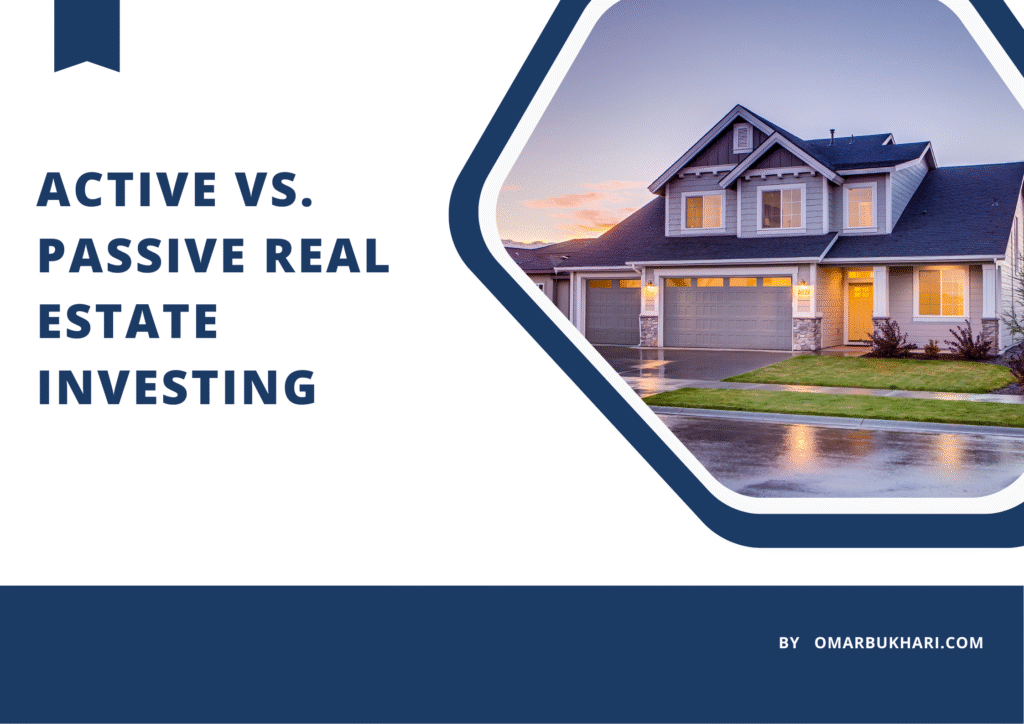Active vs passive real estate investing: Compare risk, time, skill, and control to choose the best strategy for your goals in 2025. Learn how to invest wisely!
- Introduction:
- 1. Risk: How Much Can You Lose?
- 2. Time & Effort: How Hands-On Do You Want to Be?
- 3. Skill Level: What Expertise Do You Need?
- 4. Control: Who Makes the Decisions?
- 4 Ways to Invest in Real Estate (Active vs passive real estate investing)
- Which Real Estate Investing Style Fits You?
- Final Thoughts
Introduction:
Real estate investing remains one of the most reliable ways to build wealth—but should you take an active or passive approach? With shifting markets in 2025, choosing the right strategy is critical, especially for multifamily properties like apartment buildings.
In this guide, we’ll break down the four key differences between active and passive real estate investing:
✅ Risk
✅ Time & Effort
✅ Skill Level
✅ Control
By the end, you’ll know exactly which path aligns with your financial goals.
1. Risk: How Much Can You Lose?
Active Real Estate Investing = Unlimited Risk
When you’re the deal operator, your liability isn’t capped. If a property fails, lenders can pursue personal assets (like your home or savings). This high-stakes approach requires strong risk management.
Passive Real Estate Investing = Limited Risk
Passive investors (e.g., in syndications or REITs) only risk their initial capital. If you invest $50K, that’s your max loss—similar to stocks. Ideal for low-risk wealth building.
2. Time & Effort: How Hands-On Do You Want to Be?
Active Investing = A Full-Time Job
- Market research
- Financing & negotiations
- Property management
- Renovations & tenant issues
Best for: Investors who want full control and have 20+ hours/week.
Passive Investing = “Set and Forget”
- Review deals, invest capital, collect returns
- Zero day-to-day involvement
Best for: Busy professionals who want passive income without extra work.
3. Skill Level: What Expertise Do You Need?
Active Investing = Advanced Knowledge Required
✅ Financial analysis
✅ Market forecasting
✅ Renovation budgeting
✅ Legal/tax strategies
Tip: Many active investors hire property managers to reduce workload.
Passive Investing = Beginner-Friendly
- Basic understanding of cash flow and ROI is enough
- Rely on experienced operators to manage deals
4. Control: Who Makes the Decisions?
Active Investing = Total Control
- You choose:
- Properties
- Financing
- Upgrades
- Exit strategy
Passive Investing = Zero Control
- Trust the syndicator or fund manager
- Receive updates but no operational say
4 Ways to Invest in Real Estate (Active vs passive real estate investing)
| Strategy | Activity Level | Best For |
|---|---|---|
| Buy Yourself | Active | Full control, high risk |
| Joint Venture | Active/Passive | Shared responsibility |
| Syndication | Passive | Hands-off, high returns |
| REITs/Funds | Passive | Diversification, liquidity |
Warning: Funding a deal ≠ passive if you’re signing loans or voting on major decisions.
Which Real Estate Investing Style Fits You?
Ask yourself:
🔹 Do I want high risk/reward or stability?
🔹 How much time can I commit?
🔹 Am I skilled (or willing to learn)?
🔹 Do I need control over decisions?
Active investing = Build a real estate business
Passive investing = Grow wealth without the hassle
Final Thoughts
Whether you choose active or passive real estate investing, both can generate wealth—if matched to your goals. In 2025, multifamily syndications and turnkey rentals are trending for passive investors, while fix-and-flips remain popular for active players.
Bonus : If you want to understand the modern world of cryptocurrency, check out our in-depth article on What is Cryptocurrency and How Does It Work? — perfect for beginners and curious investors alike.


Pingback: FHA Loan Requirements 2025: Credit Score, Down Payment & Income Rules – omarbukhari.com